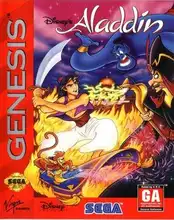Stepping back into the pixelated past often brings back memories of exotic locales and challenging levels. For many retro gamers, this journey sometimes led to digital landscapes inspired by the Middle East. While the region itself boasts a rich and growing gaming scene today, our focus is on how the Middle East appeared in the games we played back in the day.
From ancient palaces to vast deserts, games set in the Middle East offered a unique flavor compared to the usual fantasy forests or sci-fi corridors. But looking back through a modern lens, how accurate or fair were these depictions? Let's take a nostalgic trip while also considering the complexities of representation in the games we love.
The Allure of Sands and Sultans: Retro Game Settings
Think back to classic titles that might have featured levels or entire worlds evoking the Middle East. The most iconic example that springs to mind for many is the original Prince of Persia. Navigating treacherous dungeons and leaping across chasms in a setting inspired by ancient Persia felt fresh and exciting. The atmosphere, the architecture (even in 16-bit!), and the challenge combined to create memorable experiences.
Other games, perhaps less directly set in the region, might have featured desert levels or specific enemy types that drew loosely on Middle Eastern themes. These levels often provided a change of pace, challenging players with new environments and visual styles. For a generation of gamers, these digital interpretations might have been their first (and perhaps only) exposure to visuals associated with the region.
Beyond the Pixels: Acknowledging Representation
While the nostalgia is real, it's also worth acknowledging that many older games, particularly those developed in the West, often relied on simplified or stereotypical portrayals of the Middle East. This isn't unique to this region; many cultures faced similar issues in early digital media.
Common tropes included:
- Generic "Arabian Nights" settings: Often a mashup of various architectural styles and cultural elements without specific geographical or historical accuracy.
- Conflict as the primary focus: The region frequently served as a backdrop for military shooters or action games where locals were often depicted as antagonists, sometimes with little nuance.
- Visual shorthand: Excessive use of carpets, specific clothing styles, or generic Arabic-looking text that might not even be readable.
This tendency is sometimes referred to as "Digital Orientalism," echoing historical artistic movements that depicted the East through a Western, often exoticizing or hostile, gaze. Looking back, it's clear that while these settings provided fun gameplay, they didn't always offer authentic or respectful portrayals.
Finding and Playing These Nostalgic Titles
If you're feeling that retro itch and want to revisit some of these games (with a mindful eye on representation, of course), where can you find them?
- GOG.com (Good Old Games): Many classic PC titles that might have featured Middle Eastern settings are available here, often pre-configured to run on modern systems.
- Archive.org: The Internet Archive has a vast collection of playable classic games, including many DOS-era titles accessible right in your browser.
- Emulators: For console games, emulators like DOSBox (for PC classics), Kega Fusion (Genesis), or SNES9x (Super Nintendo) can help you play original ROMs or game files if you own the physical copies.
Exploring these older Middle East games is a chance to relive gaming history, appreciate level design and atmosphere, and also reflect on how far game development and cultural understanding have come.
Looking Ahead
While our nostalgic journey focuses on the past, it's important to note that the conversation around representation in games set in the Middle East continues today. There are growing efforts within the region itself to create games that tell local stories and showcase authentic culture, as well as initiatives to improve representation in global titles.
For us retro enthusiasts, revisiting the games of our youth offers a unique perspective – enjoying the gameplay and memories while also being aware of the cultural context and the evolution of how different parts of the world are depicted in our favorite medium. The pixelated dunes may have been simple, but the conversation around them is anything but.
FAQ
Q: Were there any retro games made in the Middle East? A: While the global industry was heavily centered in North America and Japan during the 80s and 90s, local development scenes existed and grew over time. The industry in the Middle East is much more prominent today, creating games for local and international audiences.
Q: Why were depictions of the Middle East in older games often stereotypical? A: This was often due to a lack of understanding, reliance on existing media tropes (like classic Orientalist art or films), and the general trend of simplifying or exoticizing foreign cultures in entertainment media for a Western audience at the time.
Q: Is Prince of Persia considered a "Middle East game"? A: Yes, the original Prince of Persia is widely considered a game set in a fictionalized ancient Persia, which is geographically part of the Middle East. It's one of the most famous examples of a retro game with a setting inspired by the region.
Q: How can I find other retro games set in the Middle East? A: Websites like Wikipedia often have category pages listing games by setting (though these lists might include modern titles too). Searching retro game databases or communities for games with "desert," "Persian," "Arabian," or specific historical Middle Eastern city settings can yield results.

